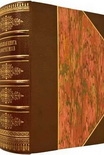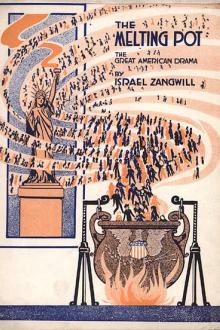No Modernism Without Lesbians, Diana Souhami [love books to read txt] 📗

- Author: Diana Souhami
Book online «No Modernism Without Lesbians, Diana Souhami [love books to read txt] 📗». Author Diana Souhami
He says ‘many many people will be murdered’ [he meant Jews] I said I didn’t think massacre was possible, there was still the open sympathy of the world… he gave a flea shake to his shoulders and said ‘well we better go on with your analysis. It is the only thing now.’
‘Die Bergner’
In Berlin, through her friendships with Pabst and Hanns Sachs, Bryher met the actress Elisabeth Bergner. She declared herself in love with her. ‘Die Bergner’, as she was known, was Viennese, Jewish and a left-wing activist. She was married to the film-maker Paul Czinner, who was Jewish and homosexual. Both were hounded by the Nazi regime. The ‘Bergner Phenomenon’ came from her androgynous looks and complex performances. She was a femme fatale and, like Greta Garbo, Marlene Dietrich and Katharine Hepburn, the new gender-questioning ideal of a heroine. Her acting career had been meteoric. In Berlin in the early 1920s she gave 566 consecutive performances in the trouser role of Rosalind in As You Like It. After a screening in Berlin in 1934 of Paul Czinner’s film The Rise of Catherine the Great, in which she starred, she, Czinner and all their films were banned by the Nazis.
While H.D. was in Vienna, Elisabeth Bergner was a frequent guest at Kenwin. Bryher compiled a scrapbook about her, took her to tea at South Audley Street in London, gave money for her film productions. She recounted all their encounters to H.D. and asked her to search second-hand shops in Vienna for photographs of Bergner and to post them to her.
Bryher’s courtship consisted of her pursuit and Bergner’s retreat. On 25 July 1933 Bryher reported to H.D.:
such a scene with Elizabeth. She called me a ‘crude taxi driver’ and kicked me out. She said any question of zoo [sex] was piggish and never to be spoken of in her presence and that she had never been with anyone, male or female, or inanimate except C [Paul Czinner her husband] for a week which she would always remember but never repeat… She said her one emotion was jealousy… That she spent half her time thinking of your great beauty as you moved across the Kenwin grass and the other half wondering how you could delicately be poisoned!!!!!!!! that she wanted someone who would never speak to someone else and that I was unbearably crude. That I was wicked.
Bergner and Czinner left Germany in late 1933. They went first to London, then to America. Bryher travelled to see her performances. At the Apollo Theatre in London, Bergner was praised for her stage performance as an unmarried mother in Escape Me Never, adapted from a novel by Margaret Kennedy. The play went to Broadway. Czinner directed the film version in 1935 and Bergner was nominated for a best actress Oscar. Other nominees included Katharine Hepburn for Alice Adams and Bette Davis for Dangerous (Bette Davis won). Bryher saw all three films in New York. ‘If you saw Hepburn you would never leave New York’, she wrote to H.D., ‘so I think it is just as well you are NOT here.’
Bryher considered leaving Europe for America but had no attachment to American lifestyle. She went to the first night in February 1934 in Connecticut of Virgil Thomson and Gertrude Stein’s opera Four Saints in Three Acts, a theatrical spectacle that was a valediction to the gaiety and freedom modernist lesbians had sought.
death of Sir John Ellerman
Bryher’s father had a stroke in the Hotel Royal in Dieppe on 16 July 1933. Bryher, in Kenwin, was contacted by her mother from the hotel. No train was scheduled before evening, so she telephoned Geneva airport and chartered a single-engine two-seater passenger plane, a Gipsy Moth; the pilot had been trained by the Swiss Air Force. The day was stormy, the flight turbulent. When she reached the hotel, her father was dead.
One of his ships took his body back to England. His coffin was draped with a Union Jack. At South Audley Street, Bryher fought off reporters who tried to question her mother. ‘I had the great satisfaction myself of kicking one cameraman hard in the stomach,’ she said.
Sir John was buried at Putney Vale Cemetery near Wimbledon Common on a grey, rainy July day. An officer from his ships, Lady Ellerman and Bryher’s brother, John, followed the hearse in the family’s Rolls-Royce. Bryher called it the Crystal Palace because it was designed with headroom for her mother’s elaborate hats. Macpherson called it ‘a Hilton on wheels, towering over everything on the roads except the tops of buses’. He and Bryher followed in ‘the Lanchester’. Press photographers shoved and pushed in their efforts to photograph the coffin as it was lowered into the ground. Lady Ellerman wrote to The Times about their hooliganism.
Bryher’s father had died at the height of the Depression. His estate, valued for probate at £36,685,000,10 represented 30 per cent of the nation’s wealth passed by probate that year, a fortune accrued by a man who showed little interest in what money could buy. ‘I believe that my father could have become a religious leader as easily as a financier, he had such an extraordinary inner detachment,’ Bryher said.
Her brother, aged twenty-three, heir to their father’s business, became the second Sir John. Bryher suspected that a ‘Letter of Directions’ about the inheritance had been taken from her father’s safe. She inferred her brother knew of this; he ‘said unpardonable things’, threw a chair at her head and they had no further contact. A month later, he married his girlfriend, Esther de Sola, who was from an orthodox Sephardic Jewish family – the elder Sir John had disapproved of her. They had no children. He was a private man who shunned all publicity, and he divided his time between a house in Buckinghamshire, a suite he permanently hired at the Dorchester Hotel in London and frequent trips to South Africa for his rodent work. He was





Comments (0)